Sport Aerobics (Aerobic Gymnastics) is a sport in which gymnasts perform a set of exercises to music with elements of acrobatics, sports and artistic gymnastics. Medals are played in individual championships (men and women), mixed pairs, trios and groups.
Aerobics got its name from the Greek word ευάερο, which translates as "filled with air", "airy." The origins of classical (recreational) aerobics lie in the distant past. The ancient Greeks believed that the most pleasant sight that pleases the gods is beautiful, blooming bodies, full of strength and health. A new round of interest and increased attention to gymnastics began in Europe during the Renaissance. Outstanding personalities of that time called gymnastics an excellent means for strengthening the health, spirit and harmonious development of a person.
Francois Delsarte, a French singer, teacher and theorist of theatrical art, developed the author's system of expressing emotions through the movements performed to musical accompaniment.
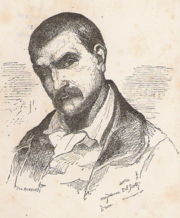 Francois Delsarte http://www.delsarteproject.com
Francois Delsarte http://www.delsarteproject.com
At the turn of the 19th and 20th centuries, gymnastic systems emerge and develop: the “German” by Frederick Jan, the “Swedish” by Pehr Ling and Hjalmar Ling, the “apparatus work” by Adolf Spiess, the “Sokol” gymnastics by Miroslav Tyrsch (Friedrich Wilhelm Thiersch, the “breathing” gymnastics by Johannes Peter Müller, the “dumbbell” gymnastics by Eugen Sandow and others. However, these systems of physical education did not take into account the physiological and psychological differences between female and male organisms.
На рубеже ХІХ–ХХ вв. возникают и развиваются гимнастические системы: «немецкая» Фридриха Яна (Frederick Jan), «шведская» Пера и Ялмара Лингов (Pehr Ling, Hjalmar Ling), «снарядная» гимнастика Адольфа Шписса (Adolf Spiess), «сокольская» гимнастика Мирослава Тырша (Friedrich Wilhelm Thiersch), «дыхательная» гимнастика Иоганна Мюллера (Johannes Peter Müller), «гантельная» гимнастика Евгения Сандова (Eugen Sandow) и др. Однако эти системы физического воспитания не учитывали физиологические и психологические отличия женского и мужского организмов.
Only in the second half of the 19th century, French physiologist and teacher Georges Demeny developed a special system of gymnastic exercises, different for boys and girls. Bess Mensendieck, a gynecologist from the United States and follower of the teachings of Georges Demeny, was the author of "women's functional gymnastics."
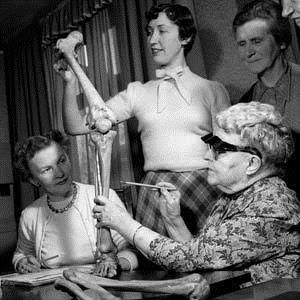
Bess Mensendieck https://www.movementhealth.com.au
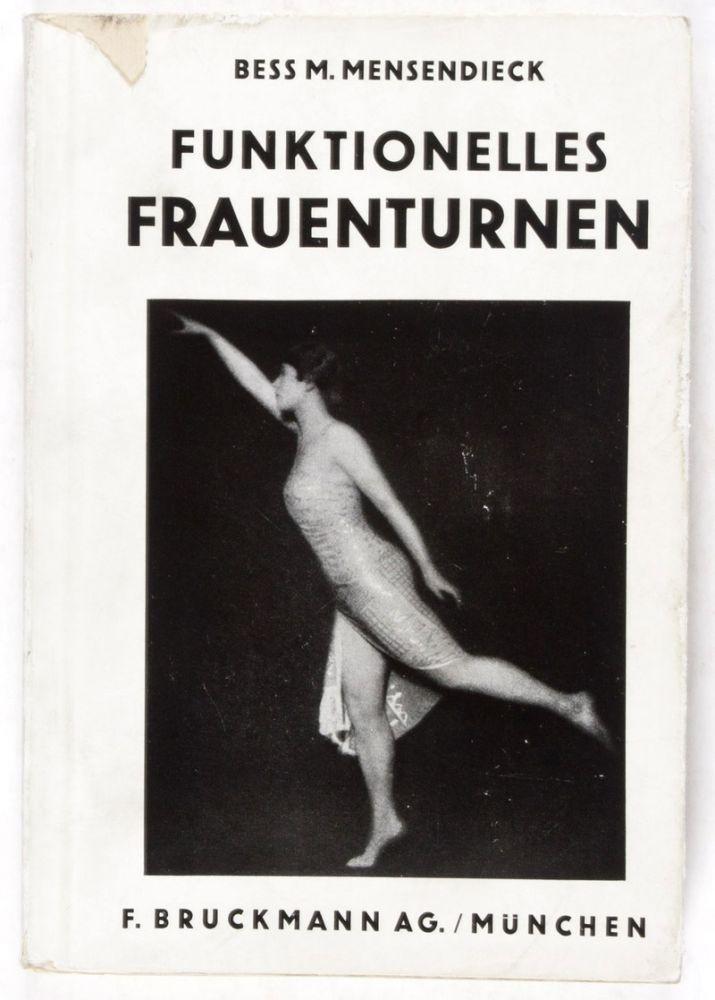
The book by Bess Mensendieck (Munich, 1930) https://www.abebooks.co.uk
Emile Jacques-Dalcroze, a professor at the Geneva Conservatory, was a big fan of the Mensendieck system. At the beginning of the 20th century, he wrote a book about the influence of rhythm on the upbringing and development of a person and established the Institute of Rhythm near Dresden.
Isadora Duncan, the famous American dancer of the early 20th century, had a significant influence on the development of the rhythmoplastic gymnastic in choreography.
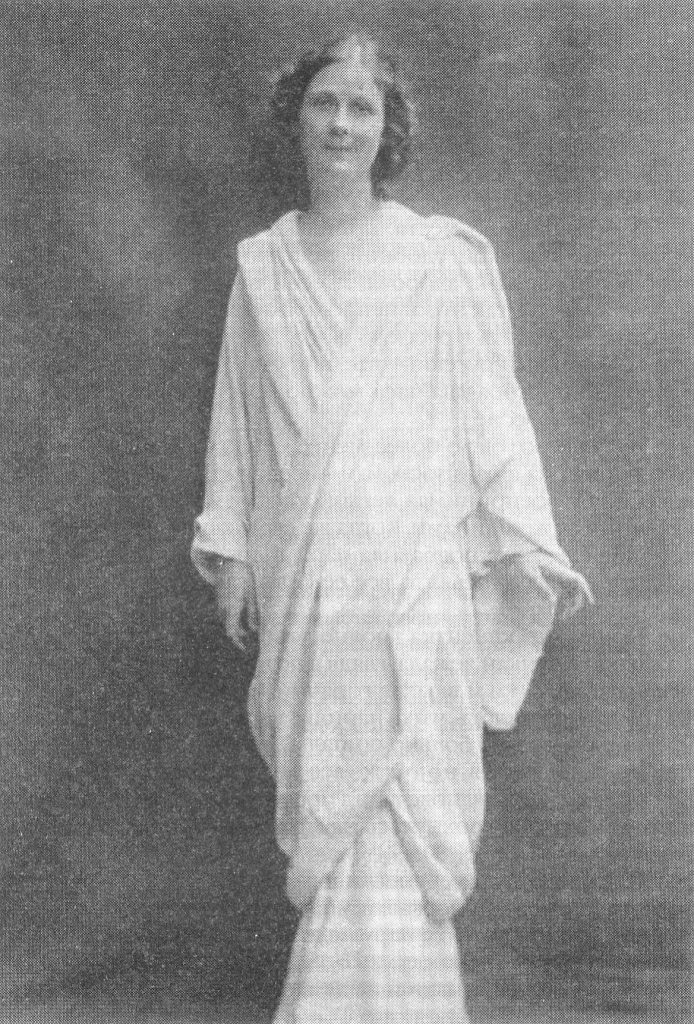
“Life is like a pendulum: the deeper the sorrow, the more colorful the joy.” Isadora Duncan. Book Айседора Дункан: модерн на босу ногу
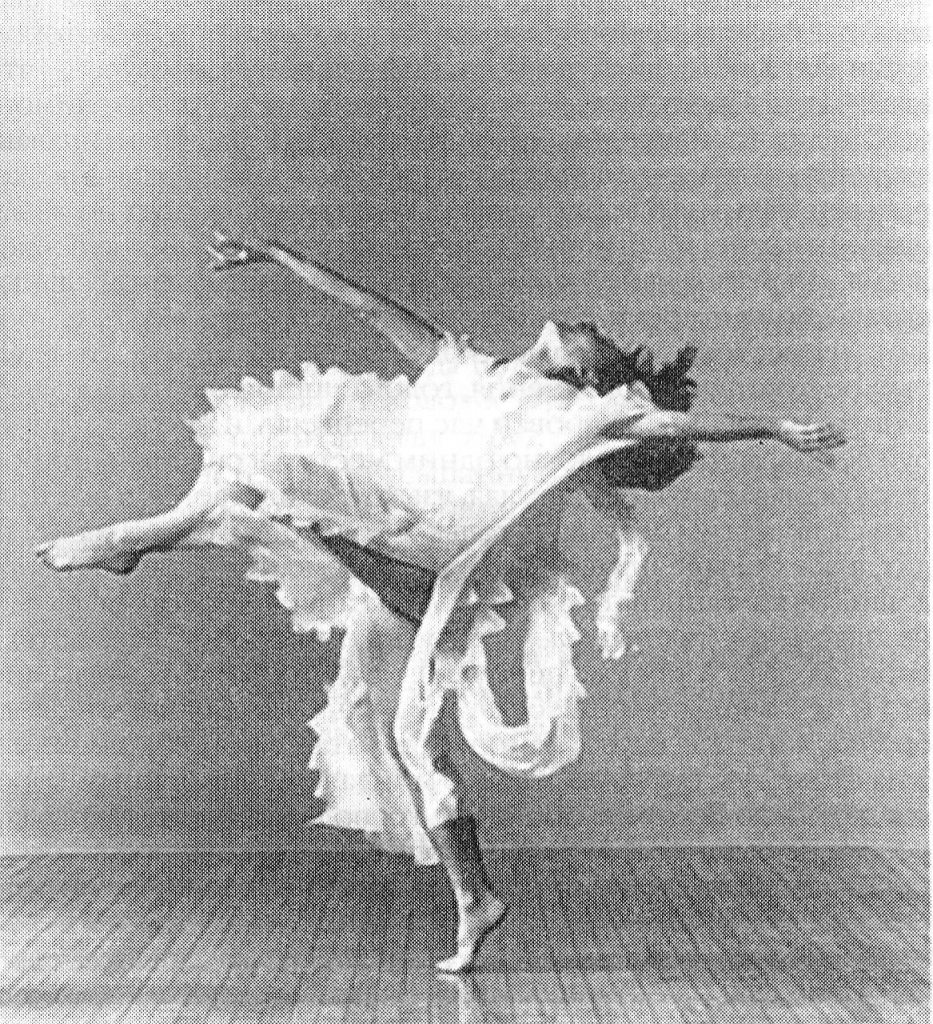 “The dancer's body is simply the luminous manifestation of the soul.” Isadora Duncan. Book Айседора Дункан: модерн на босу ногу
“The dancer's body is simply the luminous manifestation of the soul.” Isadora Duncan. Book Айседора Дункан: модерн на босу ногу
At the beginning of the twentieth century, Russia was in the midst of a search for ways to use physical culture in the development and improvement of a person. In 1913 in St. Petersburg, the Higher School of Artistic Movement (VShHD) opened at the Higher Courses of P.F. Lesgaft. The first teachers were Rosa Varshavskaya and Anastasia Nevinskaya (employees of the Petrograd Institute of Rhythm), Elena Gorlova and Alexandra Semenova-Naipak (heads of plastic studios).
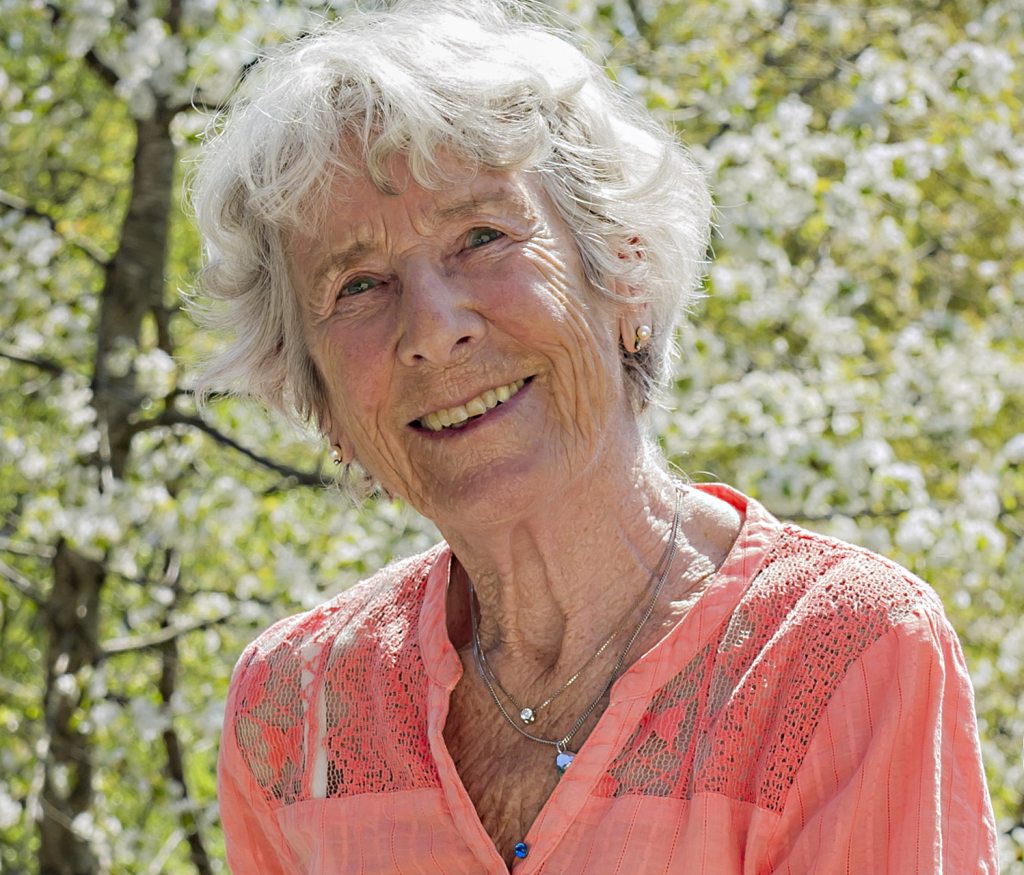 Monica Beckman (2018) https://www.nvp.se
Monica Beckman (2018) https://www.nvp.se
The Second World War suspended the development of rhythmic gymnastics. A new round came only in the 1970s after the publication of Jazz Gymnastics by Monica Beckman.
With the development of jazz gymnastics, new styles of aerobics emerged and became popular: aerobic dancing, aerobic gymnastics and gymnastic aerobics. The term “aerobics” was suggested by Kenneth H. Cooper, an American physician. Dr. Cooper discovered the relationship of physical activity, weight and balanced diet with a healthy lifestyle. He published the results of his research in the books Aerobics and New Aerobics.
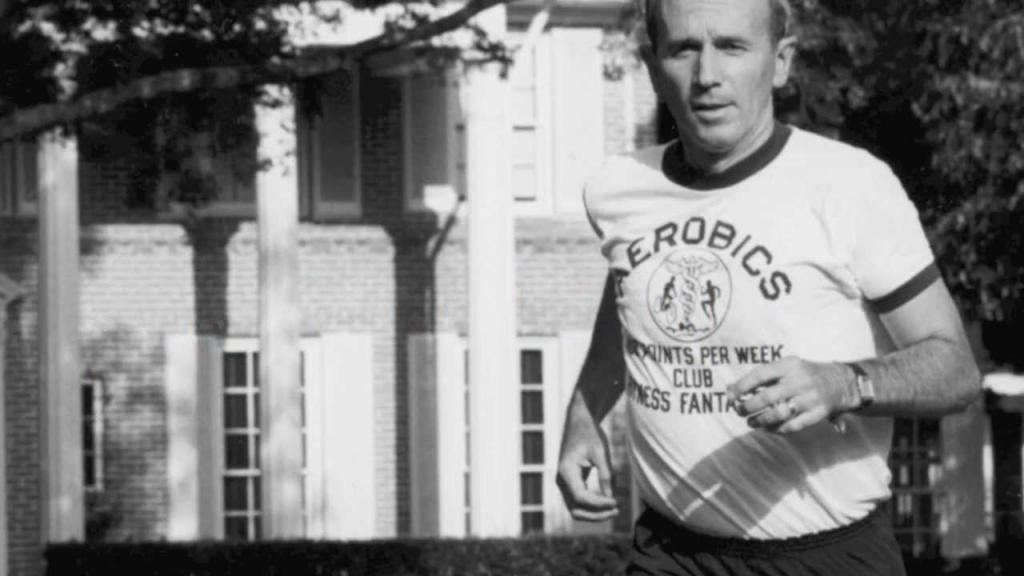 Dr. Kenneth H. Cooper http://fb.ru
Dr. Kenneth H. Cooper http://fb.ru
American film star and TV anchor Jane Fonda promoted aerobics and Kenneth Cooper's ideas. Her television programs and video tapes with exercises, performed in an incendiary dance style, gained a huge popularity, giving everyone the opportunity to improve their health.
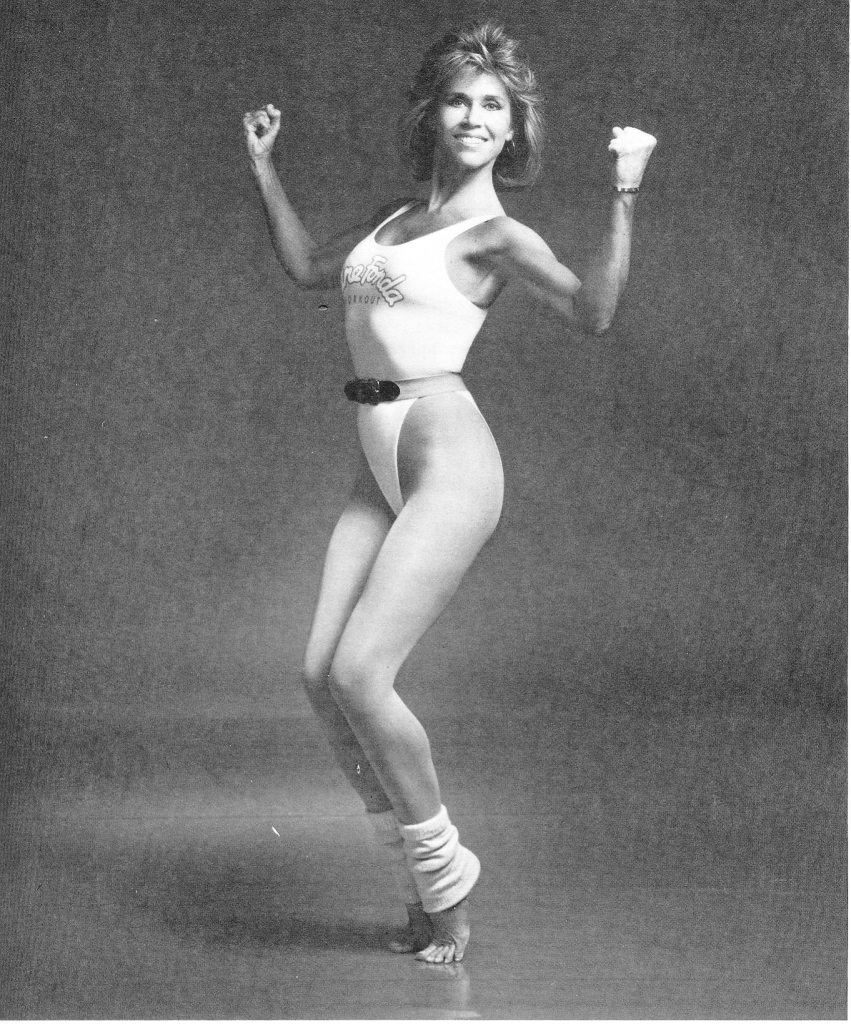
Jane Fonda. Jane Fonda's new workout & weight-loss programme
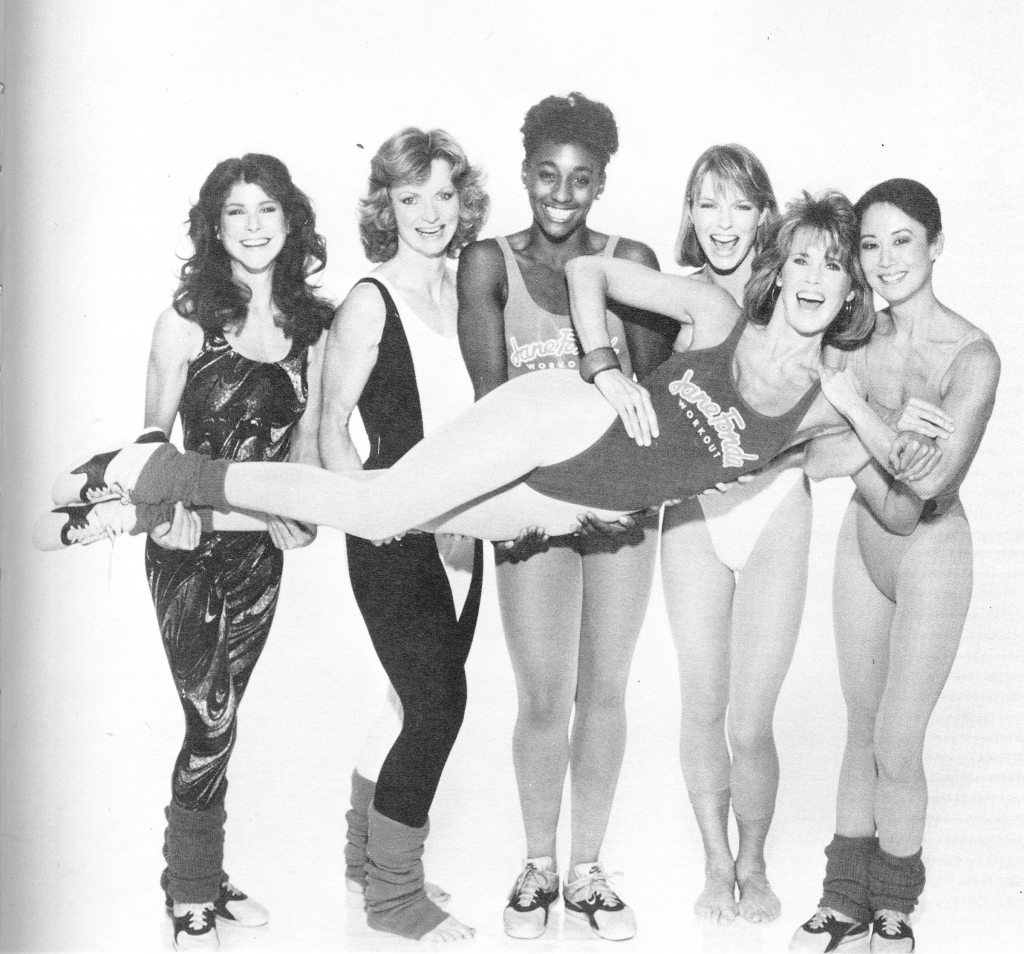 Jane Fonda with the trainees. Jane Fonda's new workout & weight-loss programme
Jane Fonda with the trainees. Jane Fonda's new workout & weight-loss programme
Aerobics became a sport after the first unofficial world championship, held by the International Competitive Aerobics Federation (ICAF) in the USA, 1990. In the same year, the European Aerobics Union was established. In 1995, the International Gymnastics Federation (Federation Internationale de Gymnastique, FIG) recognized Sport Aerobics as a type of gymnastics. In 2005, Sport Aerobics was renamed to Aerobic Gymnastics.
By the early 1980s, rhythmic gymnastics classes had gained phenomenal popularity in Belarus. Aerobics groups and circles were established at sports and recreation centers, houses of culture, enterprises and educational institutions. In 1985, the elements of rhythmic gymnastics were included in the school curriculum in physical education. Rhythmic gymnastics classes were broadcast on radio and television.
Rhythmic gymnastics, 1984
In the 1990s, with the emergence of fitness clubs, the interest of Belarusians in aerobics had increased significantly. Natalia Novozhilova, Master of Sports of the USSR in artistic gymnastics, made a huge contribution to the promotion of recreational aerobics. Her TV classes, aired from 1995 to 2001, allowed everyone.
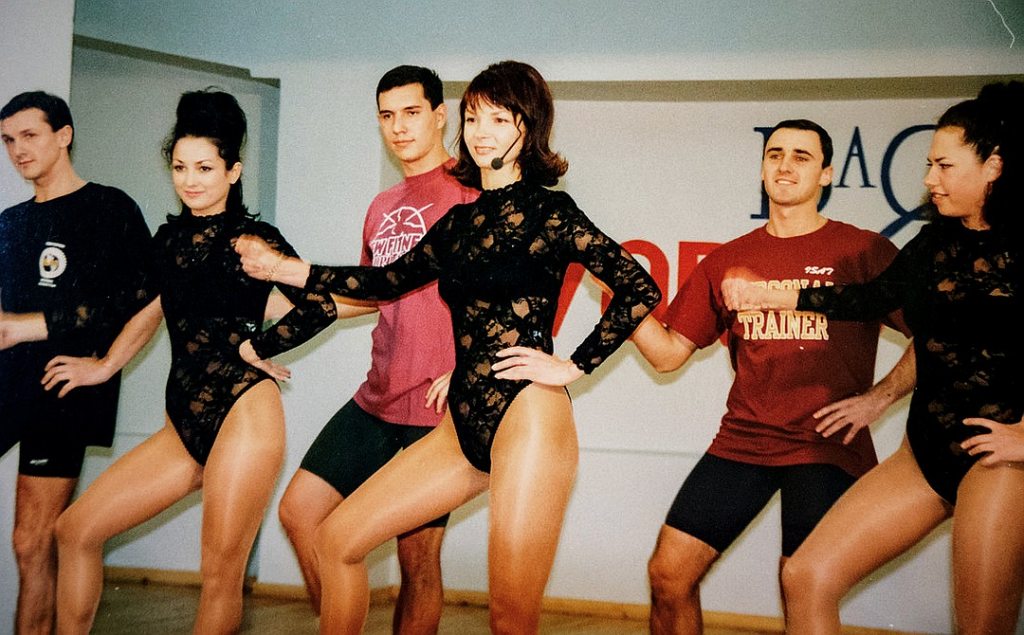 Natalia Novozhilova at an aerobics class (the 1990s) https://www.kp.by
Natalia Novozhilova at an aerobics class (the 1990s) https://www.kp.by
At present, different types of aerobics are taught at fitness clubs: dance aerobics (Latin, hip hop, funk, city jam, etc.) are developed; step aerobics (using special platforms); slide aerobics (using special sliding tracks); fitball aerobics (using special large balls); hydro-aerobics, where classes are held in the pool; yoga aerobics and many others.
The Sports Club of the Belarusian State University of Physical Education and the Republican Center for Olympic Training in Gymnastic Sports are engaged in training athletes for the national and youth teams. Young athletes, winners and prize-winners of republican and international tournaments in sports aerobics, are trained at the National Center for Artistic Work of Children and Youth, Mogilev Regional Children and Youth Sports School of Trade Unions, Gomel Children and Youth Sports School of the primary trade union organization of the Belarusian Trade and Economic University of Consumer Cooperatives, and Gomel State Regional Palace of Children's and Youth.
Sport Aerobics today
Today, Belarusian athletes represent our country at the international level, taking part in European championships and World Games.
 The logo of the Belarus Gymnastics Association http://www.bga.by
The logo of the Belarus Gymnastics Association http://www.bga.by
The Belarus Gymnastics Association is engaged in the promotion and development of Sport Aerobics in the Republic of Belarus, the preparation of athletes, the organization and conduct of various kinds of competitions. The Association unites athletes, coaches, judges and specialists in gymnastic sports: gymnastics, rhythmic gymnastics, acrobatics, aerobic gymnastics, trampolining and recreational gymnastics.Official site:http://www.bga.by
Publications:
- Здоровьесберегающие технологии. Оздоровительная аэробика : пособие для студентов и слушателей учреждений высшего образования специальностей 1-й ступени высшего образования: 1-26 01 02 «Государственное управление и право», 1-26 01 03 «Государственное управление и экономика», 1-26 03 01 «Управление информационными ресурсами», 1-26 05 01 «Государственное строительство» / Институт управленческих кадров, Кафедра физической культуры ; [Е. А. Бессмертная и др.]. – Минск : Академия управления при Президенте Республики Беларусь, 2016. – С. 5–18.
- Теория и методика избранного вида спорта (спортивная аэробика) : краткий курс лекций / Министерство образования Республики Беларусь, Учреждение образования «Витебский государственный университет им. П. М. Машерова» ; [автор-составитель Ж. А. Скнар]. – Витебск : Издательство ВГУ, 2007. – С. 11–16.
- Аэробика: методика и содержание оздоровительных занятий : учебно-методическое пособие для преподавателей физической культуры, инструкторов по оздоровительным видам фитнеса и аэробики / Белкоопсоюз, Учреждение образования «Белорусский торгово-экономический университет потребительской кооперации», Кафедра физического воспитания и спорта ; [авторы-составители: Н. А. Сергейчик, А. А. Жуковец]. – Гомель : Белорусский торгово-экономический университет потребительской кооперации, 2015. – С. 10–11.
Information resources:
- The Belarus Gymnastics Associationhttp://www.bga.by/rus/sport_aerob/about/













